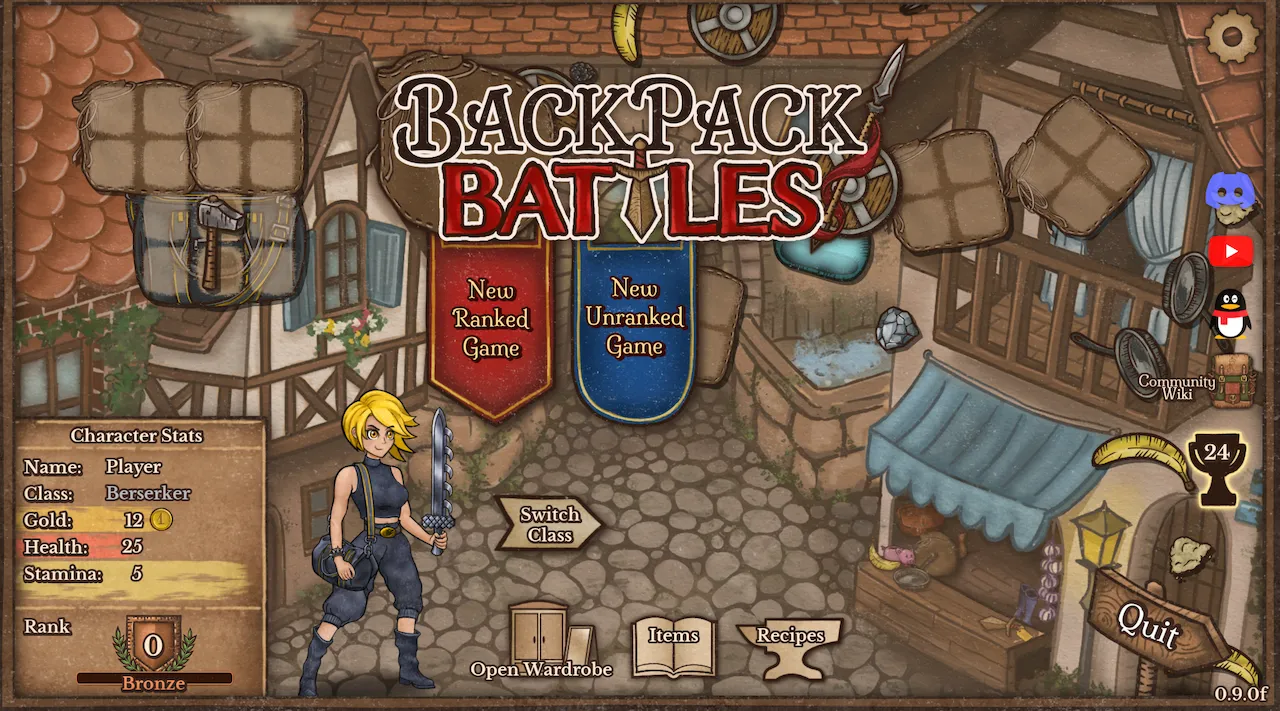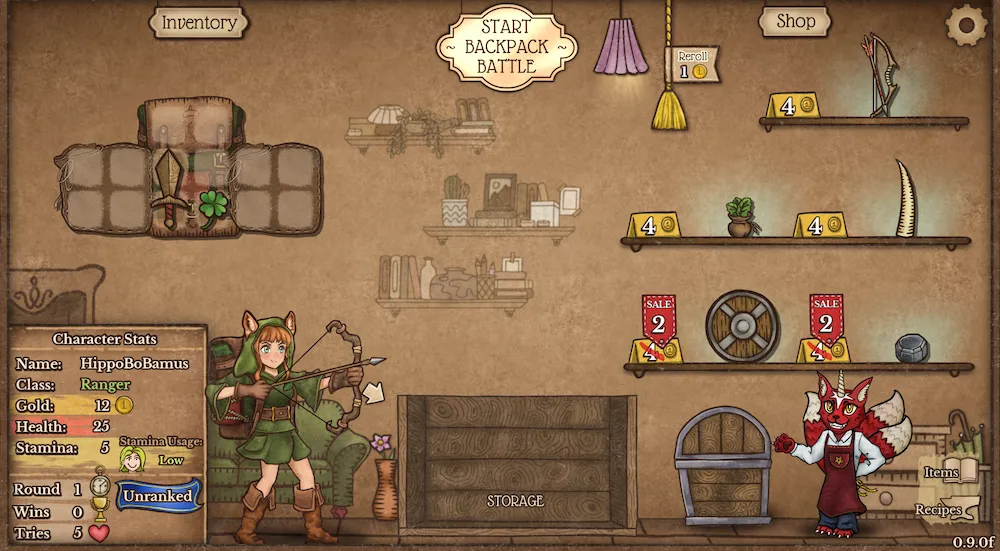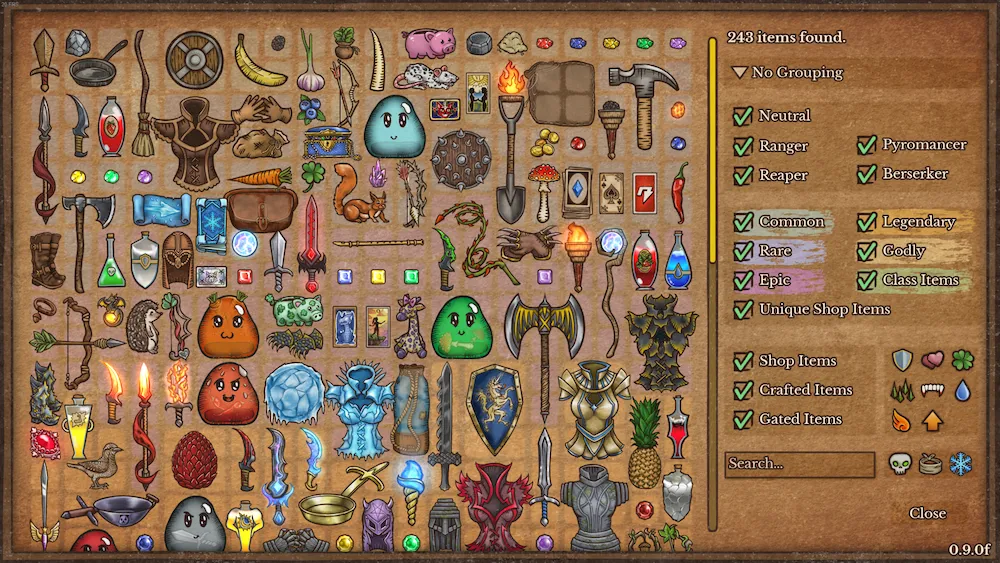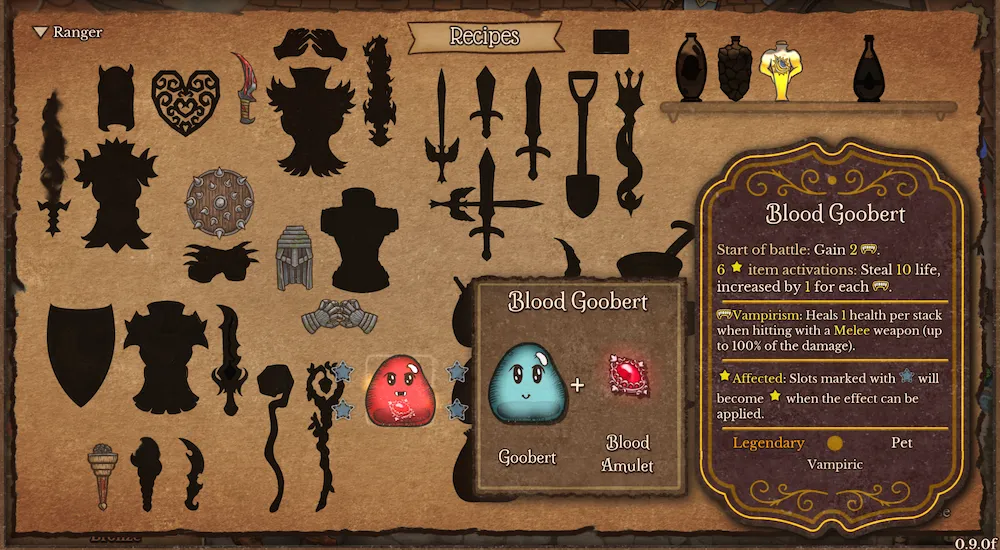The Ultimate Backpack Battles Beginner Guide
March 13, 2024
by GamerDiscovery

This game might look like it's just about watching battles happen, but there's a lot more to it. It's really about choosing the right items, putting them together in smart ways, and outsmarting other players to win.
In this Ultimate Backpack Battles Beginner Guide, we're going to show you everything you need to know to start playing. We'll cover the basics of how to pick your character, how to organize your backpack, and how to fight your first battles. Plus, we'll dive deep into the game's mechanics, exploring the four different characters you can play as: Ranger, Reaper, Berserker, and Pyromancer, and how each one can be turned into even stronger versions of themselves as you get better at the game.
We'll also give you the lowdown on the best beginner class to start with, tips on how to use the shop and item combinations to your advantage, and explanations of all the buffs, debuffs, and special effects you'll need to know about to win.
Finally, we'll share some advanced tips and strategies to help you get better, whether you're just starting or ready to compete in ranked play so let's get started.
Table of Contents
What is Backpack Battles all about?
Backpack Battles might present itself as an auto-battler, but don't be fooled! This game has far more in common with card games and deck builders, with a dash of roguelike flavor mixed in. Your goal isn't simply to watch items fight; it's about strategically building your backpack, carefully selecting items, and maximizing the powerful synergies between them. The ultimate prize? Outsmarting other players and claiming victory.
The Basics
Your journey begins with a crucial choice on your beginner class: the Ranger, Reaper, Berserker and Pyromancer. These are the four classes available in the 0.9 early access launch of the game. If you're interested in which of these is the best beginner friendly class, we'll talk about that later.
Each of the four character classes have a distinct backpack with different accessories or weaponry, which you can see on the main screen while you're switching through the classes. It's also possible to switch appearances through character skins in the "Wardrobe" section, with an additional "Chibi" option for a more anime-style character skins. Best of all, the skins are unlocked for free just by playing the game and earning trophies.
Once you lock in your character and start a game you will be in a bag management window that lets you buy new items and re-arrange your backpack before you go and start your first fight versus another player.

Gameplay Mechanics
In Backpack Battles, the gameplay mechanics blend elements of auto-battlers with those of card and deck-building games, offering a unique approach where strategic inventory management plays a central role. When you first launch the game, you are introduced to the basics:
- Inventory Management: A significant part of the game involves managing your inventory or backpack. You must strategically place your items to optimize space and leverage synergies between them. For instance, rotating items with the R key allows for better organization and utilization of the limited space.
- Item Synergies and Upgrades: Items within your backpack can synergize with one another, providing bonuses and enhancements that are crucial for victory. The game encourages players to build out their backpack with items that work well together, focusing on synergies and strategic placements. For example, the Ranger's starting gear synergizes to increase critical hit chances and accuracy, while the Pyromancer's items focus on making items trigger faster.
- Selling and Refreshing Items: Unwanted items can be sold to a mimic for gold, typically at half the purchase price, rounded up. If the shop's current offerings don't align with your strategy or needs, you have the option to refresh the inventory, giving you a new selection of items to choose from.
- Combat: Combat in Backpack Battles is automated, but players have control over the battle speed and can pause the game to inspect their items or view the combat log. This allows for on-the-fly adjustments and strategic planning during battles. Understanding how your items interact and support each other during combat is key to overcoming opponents.

Classes
As of 0.9 there's four classes in the game: Ranger, Reaper, Pyromancer and Berserker. Each of these characters have unique bags that offer different effects.
- Ranger's bag has 6 slots and gives items inside it 10% bonus critical hit chance and an additional 3% per luck.
- Reaper's bag has 8 slots and items inside it have a 25% chance to add one poison debuff on hit.
- Berserker's bag has 6 slots and gives you an ability that gives you "Battle Mode" once when your health drops below 50%. During battle rage items inside the bag trigger 30% faster and you take 20% less damage.
- Pyromancer's bag has 9 slots and it grants you one flame per Gold spent when entering a shop. It also grants your character five maximum health points per flame in the bag when you start a battle.
Later on as you progress through battles, each of these classes can further evolve into sub-classes, each offering unique gameplay enhancements and strategies. For example, the Ranger class can evolve into subclasses like the Hunter, Lifebinder, and Pathfinder. Each subclass provides specific bonuses that cater to different playstyles, such as crit specialization, mana usage, or spike damage. Choosing a subclass is a crucial decision that should align with your current item synergies and strategic direction.
What's the best Beginner Class for Backpack Battles?
Currently, the best beginner class for Backpack Battles is the Reaper. Reaper can adapt to a variety of different builds and perform quite well with most of them. In particular, a "tank" Reaper build will win you most of the early game battles just by simply fatigue-exhausting the enemies until they lose and it's really easy to equip one.
Items, Shop & Recipes
The in-game shop not only refreshes its inventory with a variety of items but also features items on sale and unique combination opportunities. Sales offer a strategic advantage by allowing players to acquire potentially game-changing items at a reduced cost. Additionally, you can reserve items for later purchase, ensuring that key components for your beginner build are secured. Understanding the shop mechanics and making the most of sales and reservations can significantly impact your gameplay success.
In Backpack Battles there's complex item combinations and upgrades, called recipes. These enable players to transform basic items into powerful gear. For instance, combining Goobert with a Blood Amulet will result in a "Bloody Goobert" which is much more powerful than the basic one as it features unique passive effects. Upgrading weapons or accessories offers significant advantages and recognizing potential item combinations and planning your purchases around these opportunities are vital strategies for winning battles.

Buffs, Debuffs and Effects Explained
Managing resources like mana, utilizing debuffs like poison, and capitalizing on buffs such as vampirism or spike damage can turn the tide of battle. Items and abilities that directly impact your opponent's stats or behaviors require strategic consideration and timing to maximize their effectiveness.
Buffs
- Empower: Weapon damage is increased by 1 per stack.
- Heat: All items trigger 2% faster per stack.
- Luck: Increases accuracy by 5% per stack.
- Mana: Resource used by Magic items.
- Regeneration: Regenerate 1 health per stack every 2 seconds.
- Spikes: Deals 1 damage per stack when hit with a Melee weapon (up to 100% of the damage).
- Vampirism: Heals 1 health per stack when hitting with a Melee weapon (up to 100% of the damage).
Debuffs
- Blind: Decreases accuracy by 5% per stack.
- Cold: All items trigger 2% slower per stack.
- Poison: Deals 1 damage per stack every 2 seconds.
Character Effects
- Battle Rage: Unique mechanic for Berserker. This is a state, when Berserker is stronger.
- Block: Absorbs 1 damage per stack. Some damage sources bypass armor and deal damage directly to health.
- Heal: Gain health.
- Fatigue: Deals increasing amount of damage to both players. Begins at nightfall.
- Invulnerability: Prevents receiving any damage during a certain amount of time.
- Nullify: Prevents a buff to be gained.
- Reflect: Inflicts the next debuff to your opponent instead of you.
- Resist: Prevents a debuff to be inflicted.
- Stun: Pauses all cooldowns for a certain amount of time.
Game Progression
As players progress, health scaling becomes an important factor— everyone's health goes up by 10 points per round. Characters become more resilient, which in return introduces new considerations for damage mechanics, requiring builds that can scale damage output effectively to keep pace with increasing health pools. Burst damage builds may be effective in the early game but require adaptation to remain viable against tougher opponents with higher health.
Building a balanced strategy that incorporates both defense and offense is crucial in advanced gameplay. Players must consider how to build their defenses to counter various enemy setups, such as shields and spikes for melee builds or specific counters for debuff-based strategies. Similarly, understanding the mechanics behind your offensive capabilities, whether it be direct attacks, debuffs, or area effects, is key to developing a winning strategy.
Battle Backpacks Tips and Tricks
Mastering Backpack Battles requires not just understanding the game's mechanics but also employing strategies that can give you an edge over your opponents. Here are some tips and tricks to help you refine your gameplay and strategies:
- Starting Strategies: Beginning with a double weapon setup is often cited as one of the most effective and reliable strategies. This approach provides a consistent damage output, crucial for the early game. However, a single weapon supported by synergistic items can also be effective, especially for the Reaper class, which can leverage poison for damage over time. The key is to find a balance that suits your playstyle while maintaining effectiveness against a variety of opponent strategies.
- Resource Management: In the early stages of the game, your resources are limited. Each gold and item purchase must be considered carefully. Rerolling the shop too frequently can deplete your gold reserves, limiting your ability to adapt your build as the game progresses. Prioritizing items on sale can provide a cost-effective way to enhance your build or to reserve items for future rounds if they are crucial for your strategy.
- Mid-Game Strategy and Synergies: As you transition to the mid-game, focus on developing a strategy that emphasizes synergies between your items. A haphazard collection of items with no coherent strategy will likely fall short against more synergized builds. Plan your purchases and shop rerolls around acquiring items that complement each other and enhance your subclass's strengths.
- Defensive and Offensive Balance: Understanding the opportunity cost of each item in your backpack is crucial. Every item chosen should contribute meaningfully to your build, either by enhancing your offensive capabilities or by bolstering your defenses. Similarly, be aware of the defensive measures your opponents might employ, such as spikes or shields, and adjust your strategy accordingly to counter them effectively.
- Understanding Damage Mechanics: Different weapons and items have varied impact on the battlefield. For example, some daggers and items socketed with sapphires can bypass enemy armor, directly attacking health. Recognizing when to use burst damage versus damage over time (DoT) effects can make a significant difference in your ability to secure victories, especially in the later stages of the game where health pools are larger.
- Build Versatility: Ensure your build is versatile enough to counter a range of enemy setups. Incorporate items or strategies that can mitigate or counter spikes, debuffs, and heavy armor. Sometimes, offensive items can serve a defensive purpose by preemptively addressing potential threats from your opponent's build.
- Ranked Play and Meta: When engaging in ranked play, be prepared to encounter a variety of strategies and meta builds. If you find yourself hitting a performance plateau, consider experimenting with different classes or researching current meta strategies. The community and online resources can be invaluable for discovering new builds or optimizing existing ones.
Conclusion - Mastering Backpack Battles
The journey from a novice to a master of Backpack Battles is paved with learning and discovery. Starting with basic gameplay mechanics, players learn to navigate their initial choices, from selecting their class to managing their first inventory setups. As they progress, the game unfolds its complexity, revealing layers of strategic depth in item combinations, subclass specializations, and nuanced combat dynamics.
By employing our tips and tricks and all the information we've provided you with, you'll have a much easier time during the early stages of the game, developing strategies that not only counter a wide range of opponents but also align with your personal playstyle. Whether you're optimizing your initial setup, mid-game strategy, or preparing for the endgame, a thoughtful approach to building and adapting your backpack is key to achieving victory. As a beginner, learning